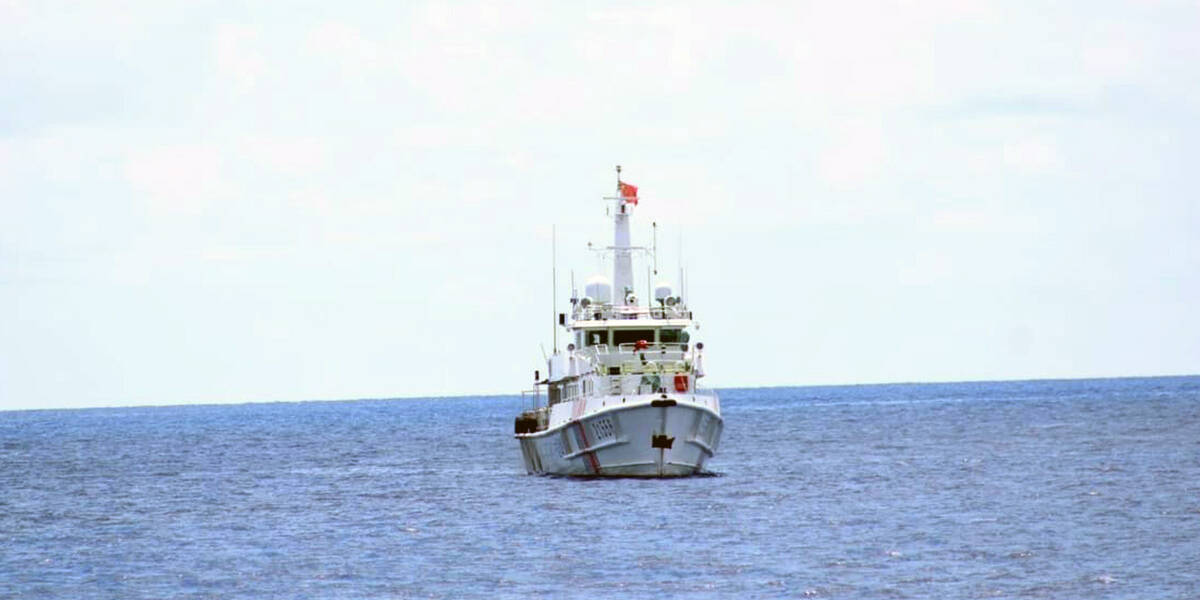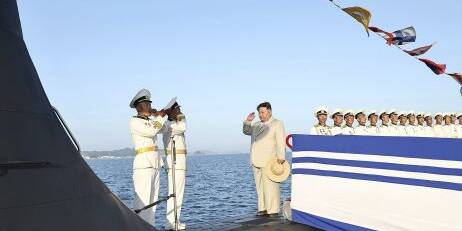Joanne Wallis, Anna Powles and Henrietta McNeill, for ASPI The Strategist
Officials from Australia, New Zealand and the United States are set to meet in Canberra this week for the fourth annual Trilateral Pacific Security Cooperation Dialogue. Their goal is to work out how to partner better and smarter in a region that is increasingly contested geopolitically. For the Pacific, the security challenges are stark. Pacific island countries are on the front lines of climate change and increasingly vulnerable to natural disasters.
As Vanuatu starts the long road to recovery from tropical cyclones Judy and Kevin, which hit in quick succession over the past week, it’s an opportune time for Australia, New Zealand and the US to discuss how to improve their collective response to disasters in the region.
Disaster diplomacy has already been on display in Vanuatu, with Australia, New Zealand, France and the UK quick to publicise their contributions. Australia sent its massive landing ship HMAS Canberra on Sunday, and New Zealand is flying in further relief supplies. It remains to be seen whether China, the US and Japan will send assistance, though if the response to the Hunga Tonga–Hunga Ha’apai volcanic eruption and tsunami in Tonga in January 2022 is an indication, they will. Within the broader context of strategic competition, disasters have come to be seen as opportunities to demonstrate capacity and commitment in the region.
As in the case of Tonga, the response to the Vanuatu cyclones raises key questions about how partners provide their assistance. These questions are pressing because there’s no regional mechanism to coordinate humanitarian assistance and disaster relief (HADR).
The first question relates to how partners coordinate their efforts. During the Tongan disaster, a HADR international coordination cell was established at Australia’s Headquarters Joint Operations Command (HQJOC) to coordinate the contributions of Australia, New Zealand, Fiji, the US, France, the UK and Japan. Tonga, as the affected country, took part. Australia also coordinated with France and New Zealand under the 1992 FRANZ arrangement, which promotes trilateral cooperation in response to natural disasters and facilitates defence cooperation.
The notable absence from the coordination cell was China, which sought to make the presence of its humanitarian response felt, but without direct coordination with other partners. This resulted in competition for pier-side support, access to tarmacs and flight scheduling, and meant that the equipment donated was not quality-controlled. Today, 75 eight-tonne inappropriate and unwanted one-bedroom prefabricated homes donated by China sit gathering salt spray on the wharf in Nuku’alofa.
The FRANZ arrangement is again being used to coordinate assistance to Vanuatu from Australia, New Zealand (as chair) and France. What’s not clear is whether the coordination cell mechanism will be reactivated to coordinate the wider range of partners seeking to assist.
And it’s unlikely that China, should it mount a response, will seek to coordinate with other partners—or that they would be receptive if it did. China highlighted its intention to have more involvement in HADR, which it included in its proposed but unsuccessful regional economic and security pact in 2022. The establishment of a disaster management cooperation mechanism for Pacific island countries, the launch of the China–Pacific Island Countries Center for Disaster Risk Reduction Cooperation and the proposed China–Pacific Island Countries subcenter for marine disaster risk reduction cooperation all reflect Chinese interests in establishing alternative HADR mechanisms. This will further complicate multilateral HADR responses.
The second question relates to how well partners coordinate their responses with the Vanuatu government. As has long been known, and was again demonstrated in the Tongan response and the 2020 response to Cyclone Harold in Vanuatu, local leadership of HADR is critical. As Sione Taumoefolau, secretary general of the Tonga Red Cross Society, noted at a workshop we organised on security cooperation in the Pacific islands in November last year, it was Tongan civil-society organisations and local community groups that had the skills and knowledge to ensure that assistance reached where it was needed.
At the same workshop, Air Commodore David Hombsch, from HQJOC, who was involved in the first coordination cell, commented that the cell was vital to rapidly delivering a maximum amount of humanitarian assistance. He said he hoped that the next time the cell was activated it would be based in the affected country, if possible, rather than in Canberra.
The response to the Vanuatu cyclones seems like a good opportunity to implement this suggestion. Vanuatu has a well-developed and experienced National Disaster Management Office which is ideally placed to house the cell.
Looking beyond the immediate response, as Wallis and Powles argue in an upcoming ASPI special report, rather than leaving coordination of HADR to mechanisms created on an ad hoc basis, partner countries should offer to help the Pacific Islands Forum establish a permanent Pacific coordinating centre for HADR. Discussions are underway to develop this capability as part of the review of regional architecture.
It will be important that any Pacific coordinating centre doesn’t replicate the dynamics of the Partners in the Blue Pacific initiative. That mechanism was launched by Australia, New Zealand, the US, Japan and the UK in June 2022 to coordinate their efforts in the region. Canada, Germany and South Korea joined later. But the initiative initially sidelined the Pacific Islands Forum and only belatedly sought to engage with forum senior officials and Pacific foreign ministers in September.
If Pacific island countries agree that a regional coordination centre is needed, it must be Pacific-led. To help facilitate this, it could sit within the Pacific Islands Forum, building on the success of the Pacific Humanitarian Pathway on COVID-19, and represent the core of the regional disaster response system. One of its roles could be to coordinate multi-stakeholder HADR in response to acute natural disasters. It could also provide services to national governments between disasters to enhance their disaster preparedness and response capacities, including strengthening national disaster management offices and ensuring coherence and coordination between the national and regional levels.
A Pacific coordinating centre would require resources, and this is where partners such as Australia, New Zealand and others can play the most important role—providing funding and logistical support to the forum to establish and maintain these initiatives. Recognising that the most effective HADR responses are led and undertaken by the people affected by disasters, partners should focus on identifying ways to facilitate locally led HADR, including through logistical assistance and the forward-positioning of relief supplies throughout the region. As Wallis and Powles argue in their report, this could also mean formally expanding HADR mechanisms such as the FRANZ and Quad arrangements to include Pacific responders.
This week’s dialogue is an opportunity to take stock of how Australia, New Zealand and the US partner with—not for—the Pacific. The Partners in the Blue Pacific Initiative offers several important and immediate lessons, not all of them positive.
The original article can be found here at The Strategist.
Joanne Wallis is a professor of international security at the University of Adelaide. Anna Powles is a senior lecturer in security studies at Massey University. Henrietta McNeill is a PhD candidate at the Australian National University and a research associate at the University of Adelaide
Feature Image; Australian Army personnel load stores onboard HMAS Canberra alongside Garden Island Defence Precinct, NSW. /Australian Department of Defence.
Related Analyses
September 15, 2024
West Philippine Sea: Several factors force BRP Teresa Magbanua to return – PCG
0 Comments1 Minute


